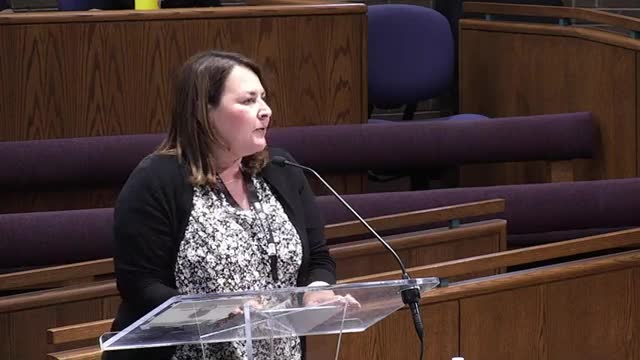City reveals new pay plan to attract younger workforce
October 14, 2024 | Arvada, Jefferson County, Colorado
This article was created by AI summarizing key points discussed. AI makes mistakes, so for full details and context, please refer to the video of the full meeting. Please report any errors so we can fix them. Report an error »

During a recent city council meeting, officials discussed upcoming changes to the city's pay plan, highlighting workforce demographics and the need for competitive compensation to attract and retain employees. The city currently employs 745 full-time and part-time benefited workers, with a notable shift towards a younger workforce, as the average age has decreased from 45 to 43 over the past four years. This demographic change is attributed to a significant drop in the number of baby boomers and a tripling of the youngest generation in the workforce.
The council noted that while the city’s workforce reflects community demographics in terms of race and ethnicity, it remains predominantly male, particularly in infrastructure and public safety roles. Efforts are ongoing to promote gender balance, with women currently making up 37% of the workforce and 62% of executive leadership positions.
The pay plan, aligned with the council's strategic goals, aims to foster an inclusive work environment. A 3% salary range adjustment for all job families is proposed for the upcoming budget, slightly below the desired 4-4.5% increase based on market trends. This adjustment is part of a broader strategy to address recruitment challenges, particularly in police and technical roles, where turnover rates have been high.
The city has seen a decrease in turnover rates, currently at 7.7%, with many employees citing better opportunities elsewhere as a primary reason for leaving. The council plans to revisit salary adjustments in the spring to ensure competitiveness in the job market.
In addition to salary adjustments, the meeting addressed the implementation of step increases for eligible employees, which reward tenure and performance. The overall payroll budget increase, including these adjustments, is projected to be approximately 4.75%, amounting to $3.5 million.
The discussions underscored the city's commitment to maintaining a competitive workforce while managing budgetary constraints, reflecting a proactive approach to human resources in the post-pandemic landscape.
The council noted that while the city’s workforce reflects community demographics in terms of race and ethnicity, it remains predominantly male, particularly in infrastructure and public safety roles. Efforts are ongoing to promote gender balance, with women currently making up 37% of the workforce and 62% of executive leadership positions.
The pay plan, aligned with the council's strategic goals, aims to foster an inclusive work environment. A 3% salary range adjustment for all job families is proposed for the upcoming budget, slightly below the desired 4-4.5% increase based on market trends. This adjustment is part of a broader strategy to address recruitment challenges, particularly in police and technical roles, where turnover rates have been high.
The city has seen a decrease in turnover rates, currently at 7.7%, with many employees citing better opportunities elsewhere as a primary reason for leaving. The council plans to revisit salary adjustments in the spring to ensure competitiveness in the job market.
In addition to salary adjustments, the meeting addressed the implementation of step increases for eligible employees, which reward tenure and performance. The overall payroll budget increase, including these adjustments, is projected to be approximately 4.75%, amounting to $3.5 million.
The discussions underscored the city's commitment to maintaining a competitive workforce while managing budgetary constraints, reflecting a proactive approach to human resources in the post-pandemic landscape.
View full meeting
This article is based on a recent meeting—watch the full video and explore the complete transcript for deeper insights into the discussion.
View full meeting
